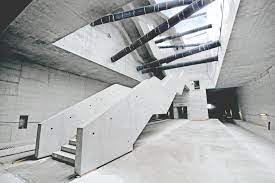Architectural precast concrete is a type of concrete that is used in construction for both structural and decorative purposes. It is a highly versatile and durable material that can be customized to suit a variety of architectural styles and design requirements. If you are involved in a construction project that involves architectural precast concrete, it is important to understand the specifications that are associated with this material. Here are ten guidelines for understanding architectural precast concrete specifications:
Understand the purpose of the specification:
The specification outlines the requirements and standards for the architectural precast concrete. It provides detailed information on the material’s properties, design, manufacturing, delivery, installation, and testing to ensure that the final product meets the desired quality and performance standards.
Know the different types of architectural precast concrete:
There are several types of architectural precast concrete, including load-bearing, non-load-bearing, and cladding panels. Each type has specific design and performance requirements that must met.
Identify the design requirements:
The specification should provide details on the design requirements for the architectural precast concrete. This includes information on the size, shape, texture, color, and finish of the material.
Understand the manufacturing process:
The specification should provide details on the manufacturing process for the architectural precast concrete, including the materials used, casting methods, curing, and finishing.
Determine the delivery requirements:
The specification should provide details on the delivery requirements for the architectural precast concrete, including packaging, transportation, and handling.
Know the installation requirements:
The specification should provide details on the installation requirements for the architectural precast concrete, including the location, preparation of the site, anchorage, and jointing.
Identify the testing requirements:
The specification should provide details on the testing requirements for the architectural precast concrete, including the testing methods, frequency, and acceptance criteria.
Understand the quality control requirements:
The specification should provide details on the quality control requirements for the architectural precast concrete. Including the procedures, documentation, and inspections that require to ensure the material meets the desired quality and performance standards.
Know the maintenance requirements:
The specification should provide details on the maintenance requirements for the architectural precast concrete. Including the cleaning, repairs, and replacement procedures.
Identify the warranty requirements:
The specification should provide details on the warranty requirements for the architectural precast concrete. Including the duration and coverage of the warranty.
In conclusion, understanding the specifications for architectural precast concrete is essential to ensure that. The material meets the desired quality and performance standards. By following these ten guidelines, you can ensure that your construction project involving architectural precast concrete is a success.

